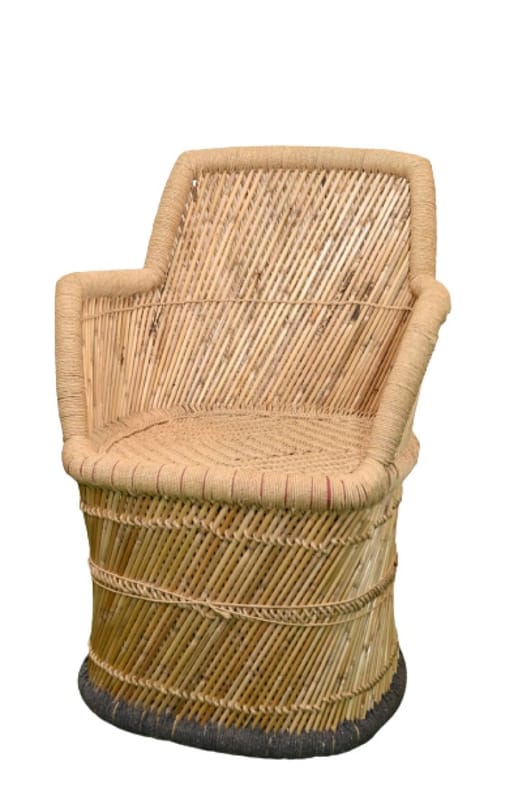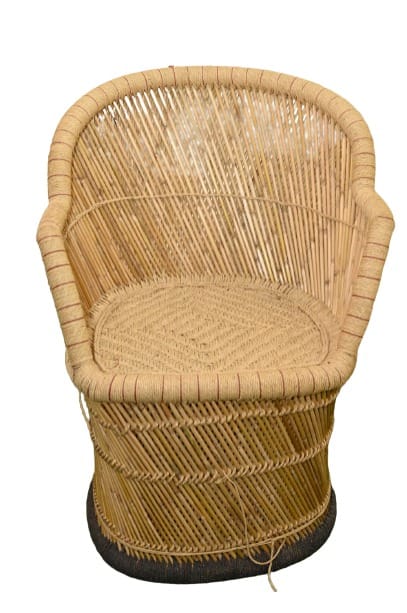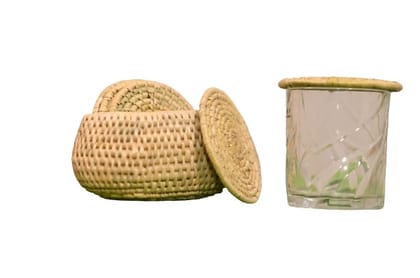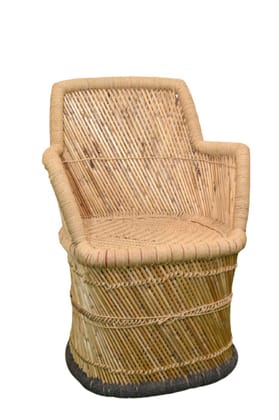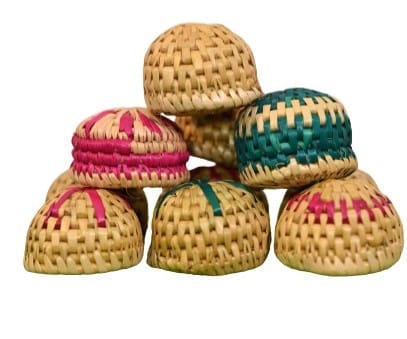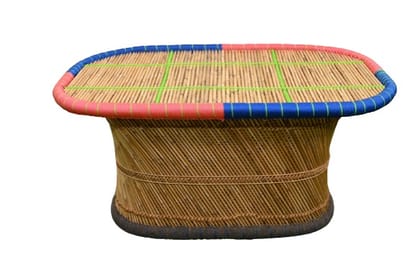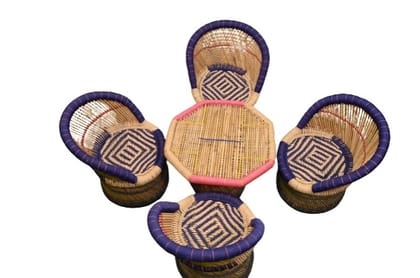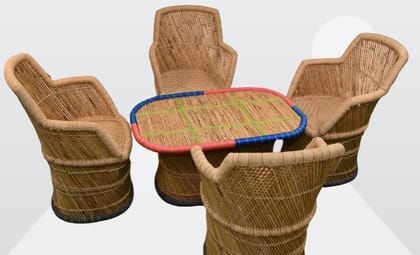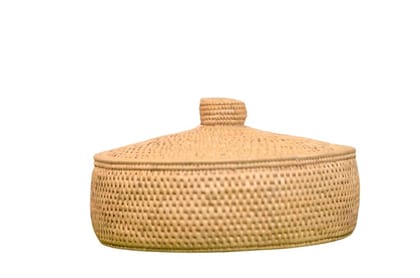Popular Categories
Support
Language
Our apps
Moonj chairs are traditional Indian handmade chairs crafted using a natural grass called "moonj" or "munj" (Saccharum munja). These chairs have a unique and rustic charm, often associated with rural settings in India. Moonj grass is known for its strength and flexibility, making it an excellent material for weaving.
The chairs are typically constructed with a frame made of wood or bamboo, providing a basic structure to support the woven moonj grass. Skilled artisans weave the grass in intricate patterns, creating a comfortable and durable seating surface. The weaving technique involves intertwining and braiding the moonj grass to form a sturdy and supportive seat and backrest.
Moonj chairs often feature a low-slung profile, offering a relaxed seating position. They are lightweight, making them easily portable and suitable for both indoor and outdoor use. The natural texture and earthy tones of the moonj grass add to the chair's aesthetic appeal, giving it a simple yet elegant look.
These chairs are not just functional but also carry cultural significance, representing traditional craftsmanship and sustainable use of natural materials. They are commonly found in rural households, providing a comfortable seating option that reflects a connection to nature and artisanal skills passed down through generations.
Used Material :
Moonj chairs are primarily made using two main materials:
-
Moonj Grass (Saccharum munja): This natural grass is the primary material used in crafting Moonj chairs. It is known for its strength, flexibility, and durability, making it an ideal material for weaving. Moonj grass is harvested, dried, and then intricately woven by skilled artisans to create the seat, backrest, and sometimes even the sides of the chair. Its natural texture and earthy color add to the chair's aesthetic appeal.
-
Wood or Bamboo Frame: While the main weaving material is moonj grass, the frame of the Moonj chair is often constructed using wood or bamboo. This frame provides the basic structure and support for the woven moonj grass, ensuring the chair's stability and longevity. The frame is usually simple in design, allowing the focus to remain on the woven grass patterns that form the seat and backrest.
The combination of moonj grass for weaving and a wooden or bamboo frame creates a lightweight, sturdy, and comfortable chair that reflects traditional craftsmanship and sustainable use of natural materials.
Finish:
The finishing process for Moonj chairs can vary and might involve several steps to enhance the chair's durability, aesthetics, or both. Some common finishing techniques or elements might include:
-
Sealing or Coating: Depending on the desired finish and intended use of the chair, a protective coating or sealant might be applied to the surface of the chair. This coating could help protect the moonj grass from moisture, dust, or wear and tear, extending the chair's lifespan.
-
Staining or Dyeing: Chairs might undergo a staining or dyeing process to achieve a particular color or to enhance the natural color of the moonj grass. This step can also add a layer of protection to the material.
-
Polishing or Smoothening: Some finishing processes involve polishing or smoothening the wooden or bamboo frame of the chair to achieve a refined look and feel.
-
Decorative Elements: In some cases, additional decorative elements might be added during the finishing process, such as embellishments, patterns, or designs, to enhance the chair's visual appeal.
The specific finishing process used for Moonj chairs can vary based on traditional techniques, regional preferences, or the artisan's expertise. It's essential to note that while finishing can enhance the chair's appearance and durability, it should also respect the natural characteristics of the moonj grass and maintain the chair's traditional craftsmanship.
Handmade Touch -
In the context of a Moonj chair or any handmade item, the "handmade touch" encompasses several aspects:
-
Craftsmanship: Skilled artisans use their expertise and hands-on techniques to create each Moonj chair. Their craftsmanship involves weaving the moonj grass, assembling the wooden or bamboo frame, and meticulously crafting the chair, resulting in a product that reflects individual skill and attention to detail.
-
Unique Variation: Handmade items often bear slight variations, showcasing the individuality of each piece. These variations could stem from the natural characteristics of the materials used, the artisan's technique, or the creative choices made during the crafting process.
-
Authenticity: The handmade touch brings authenticity and a sense of connection to tradition and culture. Each Moonj chair, made by hand, carries a story of craftsmanship, often passed down through generations, fostering a connection to heritage and artisanal practices.
-
Quality and Care: The handmade touch is indicative of the care, passion, and dedication invested by artisans into crafting each chair. It often results in a higher level of quality, attention to detail, and a personal touch that may not be found in mass-produced items.
-
Human Connection: Buying or owning a handmade item, like a Moonj chair, often creates a sense of connection to the artisan and the community where it was crafted. There's an appreciation for the time, effort, and skill that went into creating something by hand, fostering a deeper connection between the creator and the user.
The handmade touch distinguishes these items from mass-produced goods, adding value not just in their functionality but also in their story, uniqueness, and the human touch embedded within each piece.
DIMENSIONS 24*20*27
| Country of origin | India |
|---|---|
| Brand | Moonj Craft |
| Common name | Moon Chair |
| Net Quantity | 1 unit |
| Weight | 4500 g |
| Dimensions | 60L x 60W x 85H cm |
| Product Dimensions | 55L x 55W x 80H cm |
| Manufacturer or packer name | Utkarsh Handicraft |
| Manufacturer or packer address | Sultanpur |
| Manufacturing Date | 12/2023 |
| contact details consumer care | 8176876213 |
Other Products from seller
- Not Cancellable
- Not Returnable







